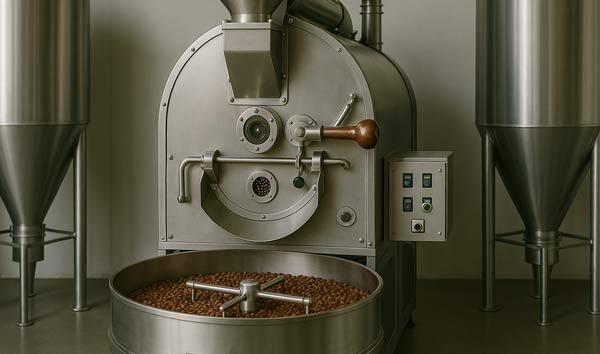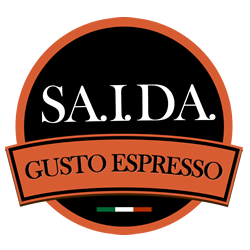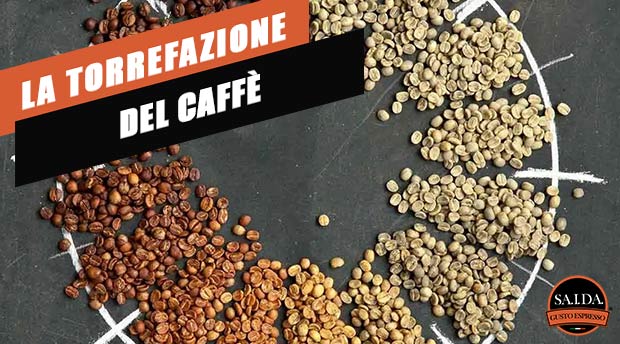Here are the secrets of coffee roasting
Coffee roasting is the process that makes previously harvested green beans develop the aromas we recognize in our daily beverage. The internal temperature of the beans often exceeds 190 °C during the “first crack”. This phenomenon indicates that the humidity and gases accumulated inside the beans are released, causing a characteristic popping sound. Variations in heat and time from this stage onwards influence the final result, such as intensity, acidity and aftertaste.
Recent studies show that green beans contain about 10-12% humidity before roasting. As they are heated, they lose much of this water and undergo structural changes that modify their color (from green to brown) and increase their volume. The taste and aroma you find in your cup also depends on the type of plant (Arabica or Robusta, for example), but the heating process plays a fundamental role in defining the final character.
How roasting comes to life
Roasting takes place inside rotating drums (or other specialized machines) that circulate hot air around the beans. The combination of mechanical agitation and homogeneous heat ensures that the beans are heated evenly. Many professional roasters, such as Borbone, set a gradual heat profile, starting at lower temperatures and then increasing the intensity. This strategy helps prevent the outside of the bean from burning and ensures that the inside reaches the temperature needed to develop aromatic compounds such as acids, oils and sugars.
In the coffee world, we often refer to light, medium and dark roasts. A light roast (finished shortly after the first crack) brings out acidity and fruitiness, while a medium roast balances acidity and body, bringing out sweet nuances. A dark roast (near or after the second crack, above 220 °C) produces a more intense drink, with bitter notes and a pronounced body, but sometimes fewer light aromatic nuances.

Temperature in roasting
The operating temperature in a roasting plant typically ranges between 200 °C and 240 °C. Reaching 220 °C is often cited as the threshold at which the second crack occurs, a new popping caused by further structural changes. However, many roasters prefer to stay in the range of 200 to 210 °C to bring out the more “delicate” aromas and maintain a balanced flavor profile. Controlling the temperature at this stage is crucial: a few degrees can make the difference between a harmonious tasting coffee and one that is too bitter or flat.
- First crack (around 195-200 °C): the beans crackle because the residual humidity finds a way out, marking the transition from a lighter phase to a more developed one.
- Second crack (over 220 °C): if the roasting continues, the beans produce a finer sound. Those who like intense and slightly bitter flavors go towards this area.
Some experts say that the “sweet spot” — the optimal point for a given origin — can be found between the first and second crack. Others prefer to go further, with an approach called “French Roast”, typically above 225 °C, which offers a very intense flavor.
The time of roasting
The time of exposure to heat for a coffee roast usually ranges between 8 and 15 minutes, but some artisanal roasters even go up to 18 or 20 minutes, with a moderate flame, to obtain a “slow” roast. Generally speaking:
- A quick roast (8-10 minutes) tends to produce more acidic and light notes, typical of some high-altitude single-origin coffees.
- A medium roast (10-12 minutes) manages to maintain a certain balance between acidity, sweetness and body.
- Over 12-15 minutes, the roast becomes more intense, with a reduction in acidity and greater bitterness.
Time control is essential: too fast and the inside of the grain will be less cooked, while excessively long times can produce burnt flavors. It is important to monitor the color and smell coming out of the drum, and also to rely on the sound of the cracks, to decide the right time to finish cooking.

The salient phases of the process
Some sources summarize the work phases in this way:
- Heating: the roaster preheats the machine, then introduces the beans and gradually brings them to temperature.
- Drying: as the residual water evaporates, the weight of the beans decreases and the color changes from green to a pale yellow.
- Aroma Development: Often coincides with the first crack, when the Maillard reaction produces aromatic compounds. Sugars combine with amino acids, and the coffee takes on much of its flavor profile.
- Caramelization: At higher temperatures, sugars caramelize, influencing roasted notes and flavor nuances. The color changes from light brown to darker shades.
- Cooling: Once the desired point is reached, the beans are extracted and cooled, often with blasts of air or special devices, to immediately stop the roasting. Leaving them hot for too long can further “cook” the inside.
Often, between batches, the roaster will examine samples of ground beans or taste small extractions to ensure the resulting profile matches the goals. This testing and tasting approach is common in many specialty roasters.
Coffee Roasting: Conclusions
Roasting is not just a technical operation: it defines the character of the beverage that arrives in the cup. Each bean, based on its geographical origin and the peculiarities of the soil, reacts differently to heat. Variables such as initial humidity, grain density, batch volume and temperature curve make each roasting session a precision job.
In artisanal laboratories, the roaster’s experience is combined with constant monitoring of parameters. Digital control systems allow the most appreciated heat profiles to be recorded and replicated. The goal is to bring out the best in each single batch of beans. In addition, rapid cooling and adequate post-roast rest (usually 24-48 hours before consumption) help stabilize aromas, reducing excess carbon dioxide and promoting a more homogeneous grind.
Knowing the basics of coffee roasting can improve your understanding of the different types of blends available on the market and guide you in choosing products that best suit your tastes. It is also useful for those who want to experiment with roasting at home, although it requires attention and a minimum of equipment. Ultimately, consciously choosing how to roast or what type of roast to buy means having a more active role in creating the final flavor.




Visita il nostro e-shop e scopri tanti prodotti a prezzi vantaggiosi!